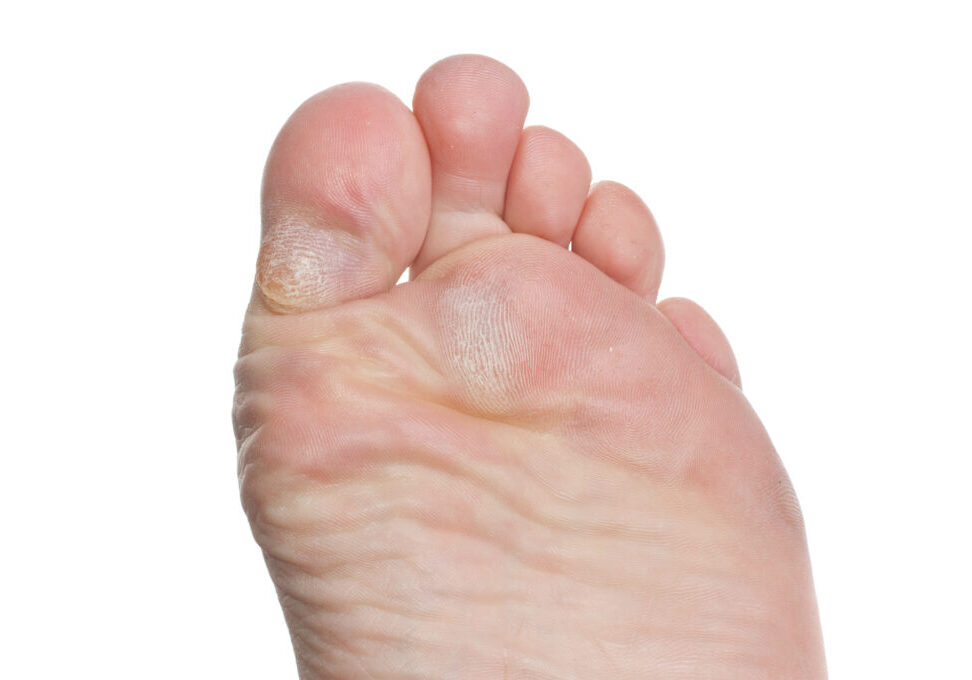Corns
What Are Corns?
A corn is made of dead skin and is a type of callus. They typically form on hairless and smooth surfaces, particularly on the side or top of your toes. They're typically circular and small, with a well-defined center that can be soft or hard.
Hard corns are usually small and show up in areas of hard, firm skin where your skin has calluses in your foot's bony areas or has thickened. Soft corns are usually white in color and have a rubbery texture. They often occur between your toes in sweaty and moist skin areas.

Causes of Corns
Some corns on your feet could develop from an incorrect walking motion, but most are due to shoes that don't fit well. The worst offenders are high-heeled shoes. They put a lot of pressure on your toes and can cause foot problems. Other causes of calluses or corns are:
- Sandals without socks
- Foot deformities
- Wearing shoes without socks
These all lead to friction on your feet. Pressure or rubbing can cause either plantar calluses or soft corns. If you develop a callus that doesn't have a clear source of pressure, you'll want a doctor to look at it since it could be caused by a splinter or other foreign body trapped under your skin or a wart.
Symptoms of Corns
You might have a callus or corn if you notice:
- A raised, hardened bump
- A rough, thick area of the skin
- Dry, flaky, or waxy skin
- Pain or tenderness under your skin
Treatments for Corns and Calluses
Callus and corn treatment typically involves you avoiding repetitive actions that made you develop them in the first place. Often you can resolve them by:
- Using protective pads
- Wearing properly fitting shoes
- Taking other self-care measures
If a callus or corn becomes painful or persists despite home treatments, you may require medical treatment by a podiatrist, such as:
- Callus-removing medication: Your podiatrist might apply a 40% salicylic acid patch on the callus or corn.
- Trimming excess skin away: The podiatrist can use a scalpel to trim a large corn or pare down thickened skin, typically during the office visit.
- Shoe inserts: The podiatrist might prescribe custom-made orthotic shoes to prevent recurring calluses or corns.
- Surgery: The podiatrist might suggest surgery, in rare instances, for correcting the alignment of the bone that is causing the friction.
Most calluses and corns go away gradually when the pressure or friction that's causing them stops. If you're not sure what's causing your callus or corn, if you have diabetes, or if the hardened skin is painful, you will need to see a podiatrist for treatment. Book an appointment with Red Mountain Footcare in Mesa, AZ for callus and corn treatment by Dr. Spencer Hardy today.
